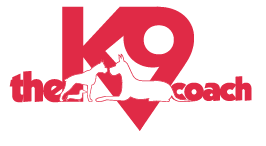Your Dog's Personality Type
Not all training is created equal. Until you understand the primary personality of your dog you will not achieve the desired results of training. Each dog will go at his/her own pace. We need to learn to evaluate where they are in their ability to learn and know when to push forward gently or to be patient.
Remember the Doggie Language Chart from yesterday — learn to speak dog and read when he’s shutting down from fatigue or frustration. Likewise, you should never bring frustration, intimidation, anger or other emotions to your training activities with your dog. If either of you are in the wrong state of mind. Take a break!!!!
If you are not giving clear signal and clear expectations — you could be part of the difficulty of him learning and progressing. It’s easy to push to far to fast — that can be dangerous with a fear biter or aggressive. It’s also easy to not go fast enough with can create boredom with a Happy Go Lucky or Hyper.
A job well-done is always praise worthy. ALWAYS PRAISE and reward the the behavior when your dog gets its right. Don’t ever forget to praise your dog. We’ll talk about effective praise and reward in a day or two.
Happy Go Lucky
A pleasing dog most of the time, even without training. May demonstrate selective hearing or amnesia as they mature.
Most learn obedience as if it were a game or trick, but often do not choose to comply. Often well socialized and confident.
Training Approach – You must be enthusiastic and fun but hold him accountable to skills and your non-negotiables. Keep him challenged with new skills, new distractions.
Hyper Active
Endless energy. Out of control, pulls against leash. Social, but short attention span and lack of focus. They do not grow out of this personality.
Training Approach Use obedience skills to teach focus and impulse control. Teach restraint. Handler must remain calm and use very limited body movement. High level of verbal or physical praise may be too much for the dog causing him to break commands. Save enthusiasm until the end of a training series.
Shy
A dog displays discomfort or lack of confidence in association with living things. Dog withdraws from unfamiliar living things.
These dogs may become comfortable with some living things but not others.Usually harmless to others, will not come out of this behavior without help.
Training Approach: Patience and very calm assertiveness. Dog must learn to work through stress. Creating specific patterns of activity and repetitive experiences to build trust and confidence. Teach simple playful games that can be easy and fun for him to learn the value of praise and reward. Later add obedience work and socialization in incremental steps further builds confidence.
Basket Case
A dog that demonstrates anxiety, fear, panic, lack of confidence around unfamiliar people, places or things. As a puppy often raised in isolation.
This personality type usually acts reasonable in his own environment, unless something changes.Training Approach: handler must build communications slowly and with patience, but still require dog to work on new skill levels each day. It’s a soft requirement to push beyond his current capabilities.
Fear Biter
An insecure Dog that when cornered or threatened may display aggression. They may also display aggression to people / things that are hesitant or show fear. Most likely to strike when the back is turned.
This personality is often scared, confused, and frustrated. Doesn’t make friends easily. Not all fear-biters bite, and it’s not limited to large dogs.
Lacks socialization.
Training Approach: handler must be calm and confident. Slow and deliberate in movements. Build trust before obedience. It is highly recommended that you work with a trainer to create controlled environments to add controlled stress to the dog teaching him to cope with it successfully. Muzzle as needed.
Aggressive
A confident dog with the ability to back it up and reactive poorly (if and when he feels it is needed). Most have learned to intimidate and control other animals and people from an early age. No size limitation.
Training Approach: An aggressive dog presents significant risk and liability. Training can be extremely effective if the handler is 110% committed to the training and supervision/management of the dog & environment.
Obedience work builds trust and socialization creates controlled stress to create new behavioral responses from the dogs to his triggers. Handler must be extremely confident (not intimidating or threatening) and non-fearful of the dog. Calm and confident leadership is essential. Muzzle as needed
Training a dog does not come without risk.
Consult a professional trainer for all your training needs and questions.
